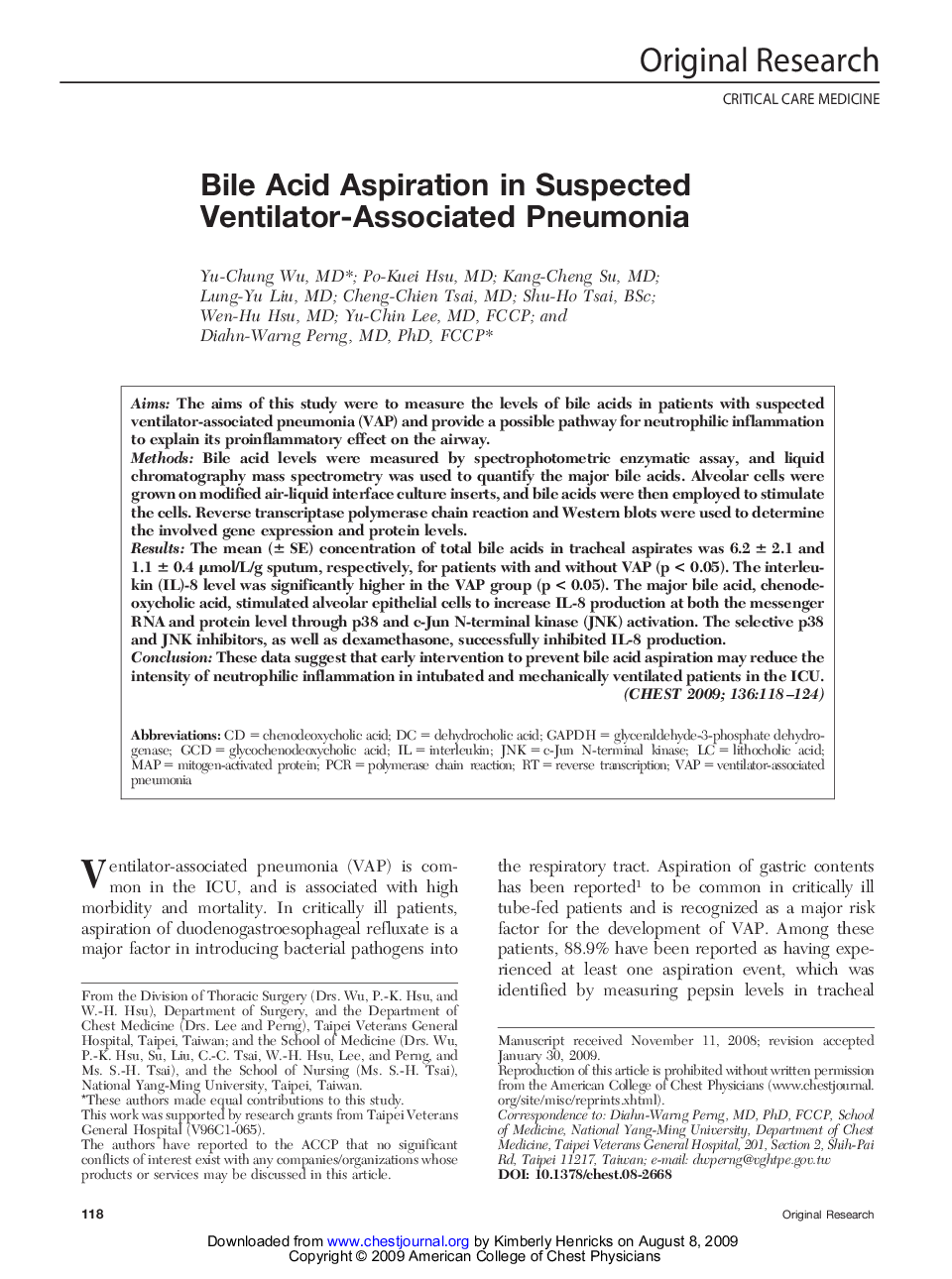| Article ID | Journal | Published Year | Pages | File Type |
|---|---|---|---|---|
| 2905384 | Chest | 2009 | 7 Pages |
AimsThe aims of this study were to measure the levels of bile acids in patients with suspected ventilator-associated pneumonia (VAP) and provide a possible pathway for neutrophilic inflammation to explain its proinflammatory effect on the airway.MethodsBile acid levels were measured by spectrophotometric enzymatic assay, and liquid chromatography mass spectrometry was used to quantify the major bile acids. Alveolar cells were grown on modified air-liquid interface culture inserts, and bile acids were then employed to stimulate the cells. Reverse transcriptase polymerase chain reaction and Western blots were used to determine the involved gene expression and protein levels.ResultsThe mean (± SE) concentration of total bile acids in tracheal aspirates was 6.2 ± 2.1 and 1.1 ± 0.4 μmol/L/g sputum, respectively, for patients with and without VAP (p < 0.05). The interleukin (IL)-8 level was significantly higher in the VAP group (p < 0.05). The major bile acid, chenodeoxycholic acid, stimulated alveolar epithelial cells to increase IL-8 production at both the messenger RNA and protein level through p38 and c-Jun N-terminal kinase (JNK) activation. The selective p38 and JNK inhibitors, as well as dexamethasone, successfully inhibited IL-8 production.ConclusionThese data suggest that early intervention to prevent bile acid aspiration may reduce the intensity of neutrophilic inflammation in intubated and mechanically ventilated patients in the ICU.
